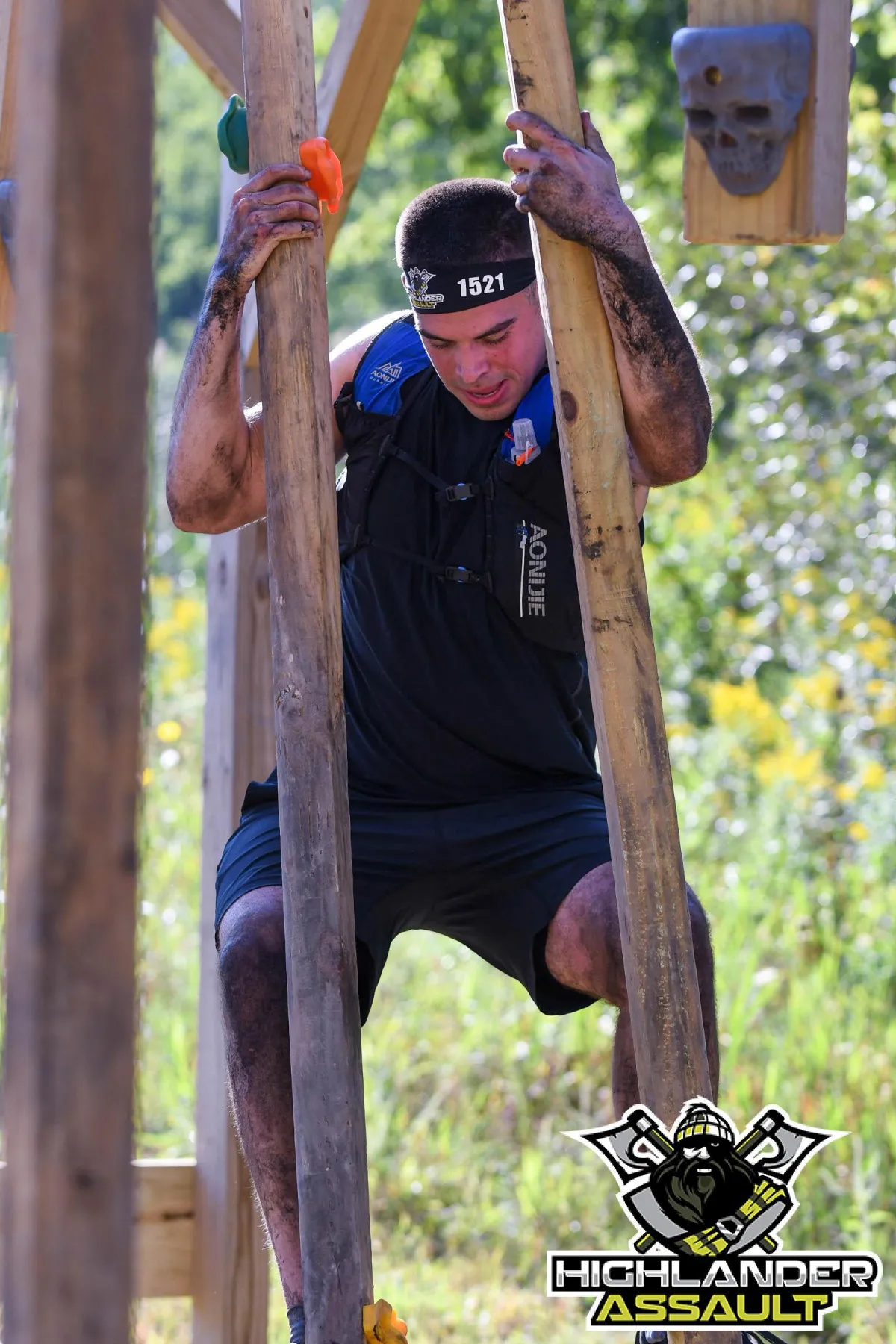The Overcoming Obstacles Blog

Wrist Sprains: Get a Grip!
"Your body will argue that there is no justifiable reason to continue. Your only recourse is to call on your spirit." — Tim Noakes
Wrist Sprains: What They Are, Why They Happen, and How to Recover Without Losing Your Mind (or Grip Strength)
Whether you slipped during a run, missed a box jump and landed awkwardly, or bailed out of a barbell lift mid-rep, wrist sprains are one of those injuries that sneak up fast and get in the way of… pretty much everything.
And if you’re into obstacle course racing, hybrid events, CrossFit, calisthenics, or just about anything active — a wrist sprain can be a serious buzzkill.
So let’s break it down:
What is a wrist sprain?
How does it happen?
What does it feel like?
And most importantly — how do you fix it and keep training smart?
🤕 What Is a Wrist Sprain?
A wrist sprain happens when the ligaments (the thick bands of connective tissue that hold your wrist bones together) get overstretched or torn. Ligaments are meant to stabilize the joint — so when they’re compromised, you lose that solid, supported feeling in your wrist.
There are three grades of wrist sprains:
Grade I: mild stretch or microscopic tear. You might feel a little sore or stiff.
Grade II: partial tear. Swelling, pain, and weakness start to show up.
Grade III: complete tear. This usually comes with significant swelling, instability, and possibly a popping sensation when it happens.
🏃♀️ How Does It Happen?
Wrist sprains usually come from falling onto an outstretched hand — a.k.a. the good ol’ FOOSH injury (Fall On Out-Stretched Hand).
But they can also occur in athletes during:
High-impact training (box jumps, obstacle dismounts, vaults)
Misjudged hand placements (think wall balls, kettlebell cleans, or handstand push-ups)
Repeated overextension under load (like overhead presses or barbell snatches)
Basically, if your wrist gets suddenly bent backward, especially under force, you’re at risk.
⚠️ What Does It Feel Like?
Signs and symptoms of a wrist sprain can include:
Pain, especially when bending the wrist or applying pressure
Swelling and/or bruising around the wrist
Tenderness to touch
Weak grip strength
Clicking or popping in more severe cases
Sometimes it’s mistaken for a fracture — and if the pain is sharp, persistent, or there’s a visible deformity, it’s worth getting an X-ray to rule that out.
How do I know if I need an x-ray? Here are some rules to follow if you do!
For a distal radius fracture:
increased age
swelling of the wrist
visible deformation (duh)
distal radius tender to palpation
pain on palmar flexion
pain on supination
painful radioulnar ballottement test
Pain on ulnar deviation was found to decrease the likelihood of a distal radial fracture.
For any wrist fracture:
increased age
male sex
swelling of the wrist
swelling of the anatomical snuffbox
visible deformation (duh the sequel)
distal radius tender to palpation
pain on radial deviation
Painful axial compression of the thumb was found to decrease the likelihood of any wrist fracture.
🛠️ How to Fix It (and Stay in the Game)
Mild to moderate sprains don’t need surgery, but they do need smart rehab — and not just “wait for it to feel better.”
Here’s how to treat it and come back stronger:
1. Reduce Inflammation Early On
Ice if you want for 10–15 minutes, 2–3x/day for the first 48 hours
Consider a wrist brace or light compression wrap to limit excessive movement
Elevate when possible to assist with swelling.
2. Start Gentle Movement Early
Rest doesn’t mean immobilization forever. After the first few days (~48 hours), start moving within a pain-free range to avoid stiffness:
Wrist circles
Finger taps and wrist flexion/extension with no weight
Nerve glides (to keep your hand and forearm from stiffening up)
3. Progressive Strengthening
Once the swelling and pain calm down, start loading it:
Isometric wrist holds (pushing against resistance without moving)
Light resistance band wrist curls and extensions, or with a light dumbbell
Wrist pronation/supination drills (rotating your palm up/down with control)
Eventually, you can add:
Heavier wrist curls
Farmer’s carries
Push-up progressions on fists or towels to reduce the amount of wrist extended position
4. Train Around It
You don’t need to stop training entirely. You can still work around a wrist sprain with:
Lower body strength work (squats, lunges, RDLs)
Cardio that doesn’t jar the wrist (bike, treadmill incline walk, sled push)
Core work that doesn’t load the wrist (sit ups, antirotation work, side planks on the elbow)
And for OCR or hybrid athletes: you can train grip without full wrist flexion — try using towel hangs, fat grips, or trap bar carries if tolerable.
🧠 Bonus Tips
Don’t push through sharp pain. This isn’t the time to “just tape it up.”
Warm up your wrists like you would your hips or knees — especially if you’re going into heavy pressing or bar work.
Improve shoulder and forearm mobility — tight shoulders or elbows can increase the strain on your wrists during movements like cleans or snatches.
Final Thoughts
Wrist sprains are annoying, but they’re also manageable with the right plan. The worst thing you can do is ignore it or overly baby it. The goal is to restore function, rebuild strength, and get back to doing what you love without hesitation.
If you’re not sure what’s safe or how to adjust your training, that’s what coaches and rehab pros are for — don’t guess, get guidance.
Need help designing a training plan that works with your injury instead of against it? Drop a comment or reach out — we can make sure your wrist heals while the rest of your training keeps moving forward. Click here to schedule your free call to talk about your wrist pain.

QUICK LINKS
GET IN TOUCH
Home Base: Little Chute, WI
(516) 924-6062
Monday - Saturday : 8:00 - 5:00
© 2024 Road to Dawn Strength and Wellness